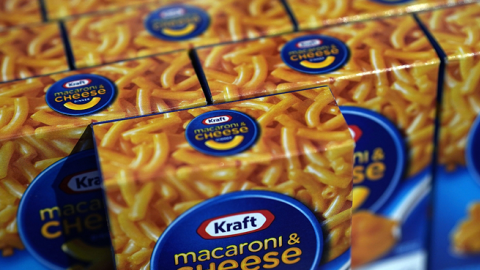Kraft Heinz, a power couple that just celebrated its fourth anniversary, needs counseling already. Despite slashing top staff and spending to make its operating margin the envy of the food industry, the merged company has seen the value of its flagship Kraft and Oscar Mayer brands tank by $15.4 billion. Sales are down 13% from pre-merger levels and its share price has plunged by two-thirds since their February 2017 peak.
Kraft Heinz’s higher margins have kept shareholders happy for a while. But ultimately the company’s sales and brand value will keep shrinking until top management changes its mindset. Instead of selling yesterday’s products tomorrow, senior Kraft Heinz executives must break free from their traditional processed food and condiment model and realize the landscape has changed. Healthier products, corporate transparency and good stewardship of the environment are becoming the minimum antes for the consumer.
But the real story is that Kraft Heinz, like most of the food industry, no longer innovates. Following Kraft Heinz’s lead, the sector concentrates on pruning costs rather than on sowing new seeds for growth. On average, the major Big Food companies spend a measly 1.4% of revenues on R&D, half the rate that makers of mundane household and personal products spend. Even worse, Kraft Heinz spent a minuscule 0.35% of its sales, or $93 million, on R&D. No wonder that, according to a study entitled “Is Big Food in Trouble?” by consultancy A.T. Kearney, annual revenue growth of the 25 top food manufacturers is a puny 1.8%, compared with 11% to 15% for small and medium-sized food companies.
Kraft Heinz and other Big Food companies have always been risk-averse. But today, the need to break out of that rigid mindset is urgent. The industry is under siege from smaller upstarts offering the healthier and fresher products that more and more consumers want. Increasingly, supermarket shoppers are shunning the middle-aisle neighborhoods where pickles and Velveeta live and are gravitating to the fresher, more exciting upstarts on the outskirts. According to Nielsen’s Breakthrough Innovation Report, companies outside the top 100 ranking drove 49% of all the consumer packaged goods’ category growth from 2011 to 2015.
Yet despite some small and tentative forays into healthier products, Big Food still focuses too much on cutting costs and adding line extensions to the same tired brands instead of pioneering healthier and appealing new offerings. For example, Kellogg's recently announced “breakthrough” new products that are little more than variations of beloved trademarks: Pringles Wavy Chips, Rice Krispies Treats Snap Crackle Poppers, Cheez-It Snap-d Thin and Crispy Cheese Crackers. Not to be outdone, Kraft Heinz this week launched Unicorn-Shaped Macaroni & Cheese. While tasty, these products bring more of the same and do not propel their companies into the future.
To make real and necessary change, here are three things that Kraft Heinz and other Big Food players can do:
* **Stop thinking like a water utility and more like a Silicon Valley startup. Packaged food companies are great marketers.** But they won’t be successful selling yesterday’s products to today’s more demanding consumer. Tired line extensions run the risk of becoming line extinctions that mostly serve to prop up sales and retain shrinking shelf space on grocery shelves. Instead, food companies need to innovate -- and fast. Pouring money into early stage food company incubators is a good start, but breakthrough product innovations need to be organic. Innovating is a mindset. Outsourcing new product development will not change a calcifying culture.
* Double spending on R&D. That means restoring their decimated R&D ranks and devoting their best technical minds to developing next generation products -- healthier, simple, delicious and convenient for time-stressed consumers. Consider that General Motors became more competitive in the U.S. and globally by upping its R&D spending to more than 5% of sales. Unless big food companies do that, they will continue to lose ground and become tired and irrelevant here and globally.
* Take ownership of societal and public health issues related to their business. This does not mean that they are to blame. It demonstrates leadership to address the health, social and environmental issues that could be their undoing if ignored. They need to own the social problems like obesity they contribute to and take steps to fix them. They need to take a lesson from companies like CVS Health (which eliminated tobacco), Anheuser-Busch (which took ownership of the drunk driving issue) and Danone (which revamped its entire product portfolio and now only sells better-for-you products). Today’s consumers demand transparency, especially from big companies, and want to give their business to those that care about quality ingredients, the environment and social justice. Companies that take a stand on these matters will appeal to consumers’ hearts, minds and wallets.
Kraft Heinz and other food companies still have a chance to reverse their fortunes and become the venerable companies they once were. They have the tools they need to do it. They just need to break free of their middle aisle mentality and bet more strongly on breakthrough new products that will become their flagships of the future.



















